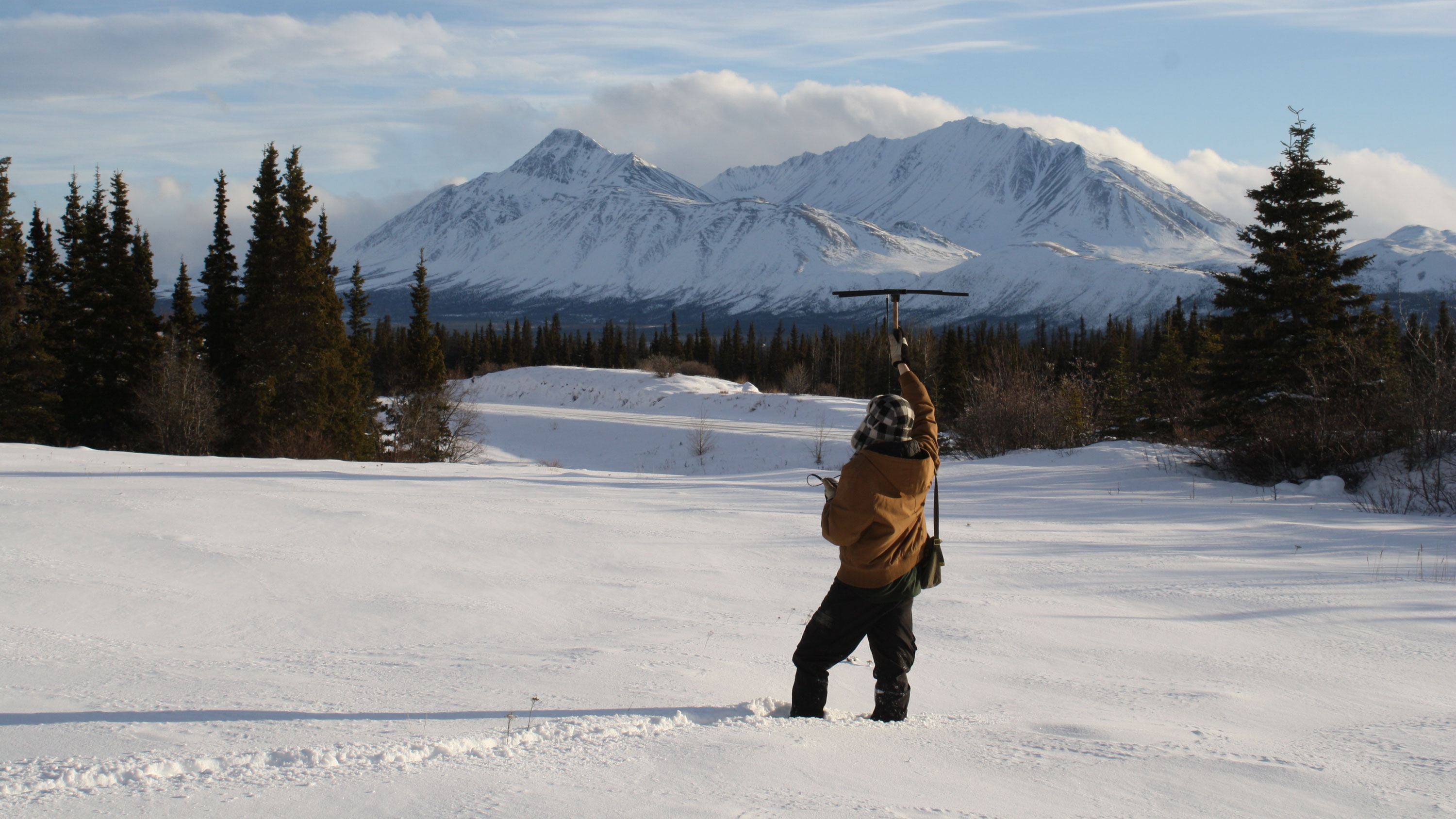Warmer winters with less snowfall could wreak havoc on snowshoe hare populations in the Canadian North—and the fallout has consequences for other wildlife such as lynx and coyotes, according to a new study by University of Alberta ecologists.
“Our study shows that snowshoe hare survival is significantly reduced in shallow snow, particularly when snow depths are less than 35 centimetres,” said Michael Peers, who led the research during his PhD studies in the Faculty of Science.
“This is likely due to improved hunting success of their predators, especially coyotes, which almost exclusively killed hares in shallow snow. Projections developed from our data indicate that future winters with prolonged shallow snow could cause hare populations to decline.”
Adapted for the snow with large feet, snowshoe hares are most successful in deep and even soft snow. But results from the study show that in the last 20 years, winter snow depths have declined by about 35 per cent in the Yukon—a bad sign for the snow-dwelling hares.

Further, the decline of snowshoe hare populations in the Canadian North could create a negative ripple effect for other species in the boreal forest as an ecosystem, Peers noted.
“Climate change is affecting species around the globe,” he said. “Numerous species in the North that are well adapted to cold, deep-snow environments will likely be negatively affected by changes in climate that we are observing. These projections of declining hare populations are concerning, as they could indeed become reality.”
Peers completed the research under the supervision of Professor Stan Boutin in the Department of Biological Sciences. This research is funded by the Natural Sciences and Engineering Research Council of Canada and the W. Garfield Weston Foundation. The study, “Climate change increases predation risk for a keystone species of the boreal forest,” was published in Nature Climate Change.